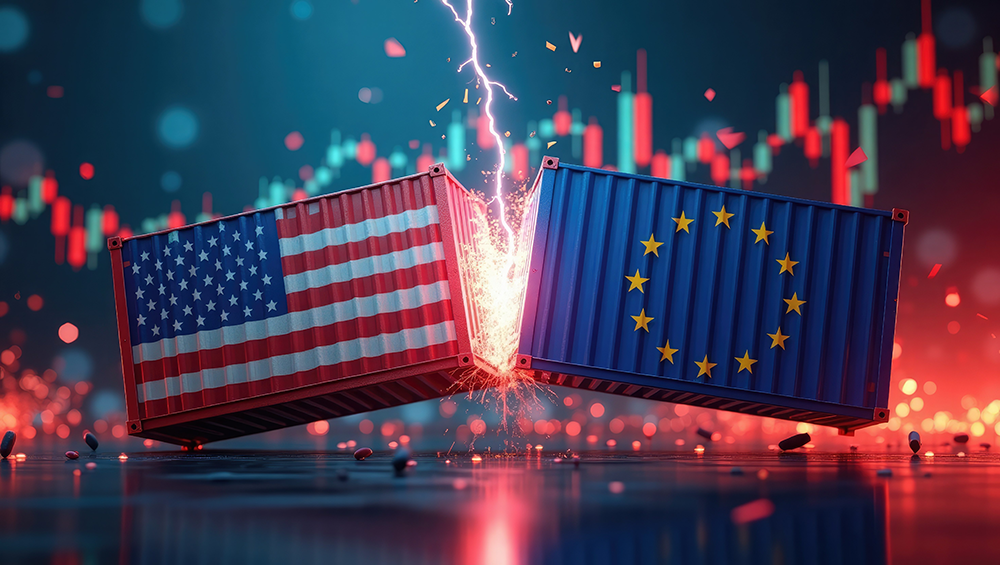U.S. Aluminum vs. European Aluminum: A Comprehensive Short-Term Market Outlook

A striking aspect of the aluminum premium and the aluminum market turmoil currently unfolding after Trump’s aluminum tariffs is how differently it’s playing out in the U.S. versus other regions. While premiums inside of the U.S. are rising, outside the United States, aluminum premiums are actually falling. With U.S. tariffs shutting out or discouraging some imports, those metal volumes are being redirected elsewhere, leading to relative oversupply abroad.
In Europe, for instance, the going premium for aluminum (duty-paid) has plunged to about $230 per metric ton, their lowest level in over a year. Since January, Europe’s aluminum premium has dropped more than 35% according to Reuters, a mirror image of the U.S. increase. As Reuters noted, physical market premiums in Europe have been “falling elsewhere as aluminum produced in countries where import levies apply is diverted” away from the U.S. In other words, according to MetalMiner’s weekly newsletter, metal that might have shipped to American buyers is now piling up in European warehouses, pushing down regional prices in the aluminum market.
Can Traders Beat the Tariff Wall?
This trans-Atlantic premium gap is a direct outcome of the tariff wall. The arbitrage opportunity is obvious on paper: if not for trade barriers, traders would rush to send “cheap” European aluminum into the pricey U.S. market. However, the very causes of the gap also complicate exploiting it.
A European producer might sell aluminum in the aluminum market at a $230/ton premium in Europe, for example, but shipping that metal to an American customer means incurring the U.S. import duty (25%). That duty alone could add roughly $600 per ton. Even with the higher U.S. premium, the math is tight once tariffs are paid.

Second, the logistical challenges discussed earlier, from finding available cargo ships to securing inland transport, make it non-trivial to simply divert all excess European metal stateside. Strategies to deal with these sourcing challenges can be found inThe 5 Best Practices for Metal Based Sourcing. It takes time to reorganize supply routes, and many buyers also hesitate to rely on distant shipments given the uncertainties.
Aluminum Market: From Beverage Cans to Aerospace
Europe’s aluminum industry is nonetheless scrambling to adapt. European producers and traders find themselves in an odd position: their local premium is depressed due to oversupply, yet a very attractive market exists across the ocean if they can navigate the tariffs. Some European suppliers have reportedly begun lobbying for relief or creative solutions. (Brussels, in fact, has hinted at investigating the surge of metal being “diverted” into Europe due to U.S. tariffs, worried it could hurt local producers.)

On the flip side, U.S. buyers are seeking any possible workaround. A few are exploring whether certain specialized aluminum products could be excluded from tariffs, or whether alternate trade channels could be viable. Thus far, however, the tariffs are broad and loopholes few. The net effect is that U.S. aluminum consumers remain largely locked into paying the steep premiums. American primary aluminum production capacity, which has been in decline for decades, cannot ramp up quickly enough to alleviate the shortage, according to Reuters.
With domestic output limited and imports now more costly, users have no immediate alternative. Many are simply absorbing the hit in the short-term. Industries from beverage can manufacturers to aerospace companies are bracing for higher input costs.
Looking to optimize your aluminum sourcing in a tariff-heavy aluminum market? Insights SV provides the insights needed to make informed decisions and reduce costs.
Outlook: Elevated Costs Likely to Persist
For business-to-business buyers in the aluminum market, the current scenario amounts to a rapid increase in procurement costs and considerable uncertainty ahead. All signs suggest that elevated premiums are here to stay in the near term. Traders predict U.S. aluminum premiums will continue rising as long as these dynamics hold, with producers and sellers pushing as much of the tariff burden onto consumers as the market will bear.
Thus far, demand for physical aluminum has proven resilient enough that buyers are indeed paying these higher premiums, especially for must-have grades and prompt deliveries.

Some relief could eventually come from market adjustments or policy changes, but neither is immediate. If the high U.S. premium persists, it will gradually incentivize more creative supply responses. Perhaps new export channels from places like the Middle East, or increased secondary (scrap) aluminum utilization domestically.
It’s telling that only one major supplier country, the United Arab Emirates, currently isn’t subject to the new U.S. tariffs. The UAE accounts for about 11% of U.S. aluminum imports, according to Reuters. With Canada (the top supplier) now under heavy tariff, some U.S. buyers may pivot to rely more on UAE metal.
Policy resolution is the other hope on the horizon. There are murmurs of ongoing trade negotiations in the background. One example is talks with the EU and others to possibly dial down tensions. But for now, the tariffs remain firmly in place, and so does the retaliatory environment. In fact, businesses are operating under the assumption that these import taxes and the resulting supply chain snags will be an enduring feature for at least the next several months.
Can B2B Buyers Outsmart the Turbulent Aluminum Market?
The spike in aluminum delivery premiums is a textbook case of how trade policy and logistics challenges can collide to jolt the aluminum market. A hefty new tariff regime has raised the base cost for foreign aluminum, and a cascade of effects, from rushed and then halted shipments, to ships taking longer routes, to oversupply in some regions and scarcity in others, has amplified that cost increase for U.S. buyers.
For business-to-business purchasers, the key will be adapting to this new normal: finding efficiencies elsewhere to offset higher aluminum costs, exploring alternative materials or suppliers, and staying nimble in case the situation changes yet again.

As it stands, American companies that depend on aluminum are paying a premium in the truest sense (both literally and figuratively) for the turbulent state of global trade. These issues can be avoided with monthly aluminum sourcing strategies and aluminum market outlooks in the Monthly Metals Outlook report, a free sample of which can be found here. Until tariffs are eased or supply chains significantly readjust, U.S. aluminum premiums are likely to remain painfully high, pressuring downstream industries. In the words of one trader, “the market has priced in the chaos” – and for now, that price is historically steep.
The hope among manufacturers is that cooler heads eventually prevail on trade matters, and that logistical kinks unknot over time, bringing aluminum costs back down to earth. But in the meantime, buyers are battening down the hatches for a period of sustained volatility and cost pressure in this critical commodity.
